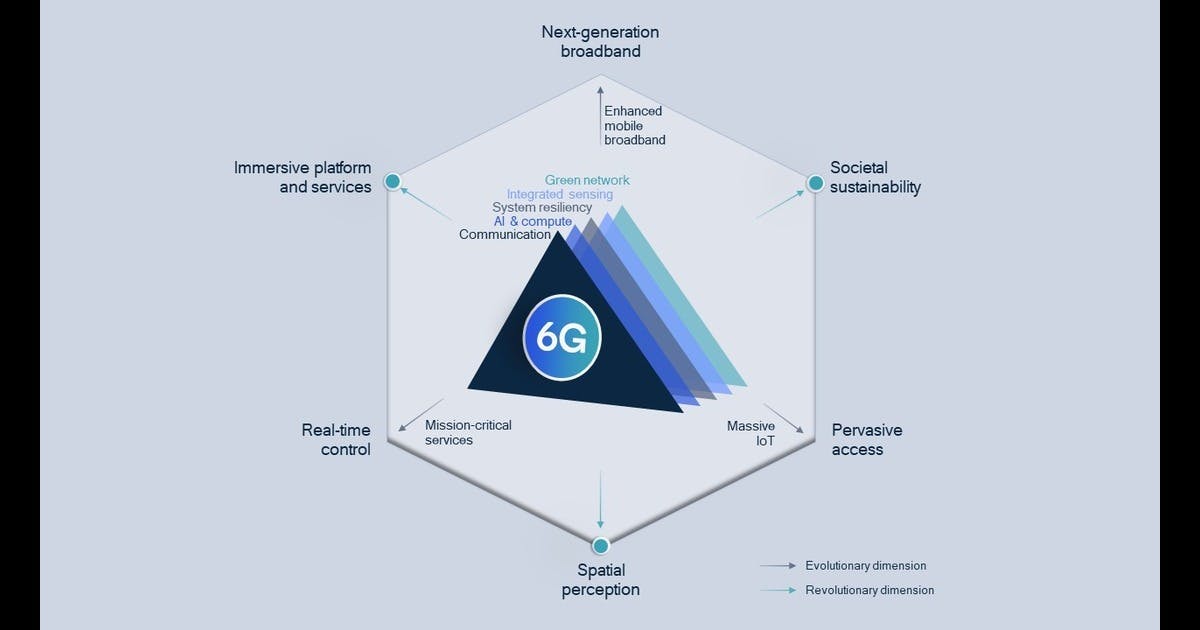2022 has been an exciting year for mobile communications. Not only was the third 5G standard released successfully and bought many 5G innovations, but the work on 5G Advanced has also officially begun. Throughout the remaining years of this decade, 5G Advanced will keep enhancing the performance of the entire system, bringing about new efficiencies, and expanding the application of 5G to additional objects and scenarios. More significantly, 5G Advanced is laying the technical groundwork for 6G, the upcoming mobile technology that will be available in 2030 and beyond.
As mobile and the larger vertical ecosystems begin to conduct fundamental technology research in preparation for the upcoming decade of advancements, the early vision for 6G is beginning to take shape. Although the commercial debut of the 6G platform is still some years away, one thing is for certain: 6G will usher in technological advances, novel experiences, and use cases that are currently unfathomable.
The purposes, capabilities, and uses of 6G
So why will 6G be necessary? At a high level, there are three main driving forces: leveraging core technological advancements (in wireless and adjacent fields like semiconductors and materials science), addressing new demands for next-level experiences that 5G cannot satisfy, and addressing societal sustainability needs (economic growth, digital access, and green initiatives).
To effectively achieve these goals, 6G will be a smarter platform that offers more than simply a new radio design. It is anticipated to include a wider spectrum of technologies to further support the scalability of the connected intelligent edge. The combined potential of communications, artificial intelligence (AI), integrated sensing, system resiliency, and greener networks will be fully realized with the advent of 6G.
For use cases, 6G will advance fixed and mobile broadband to support increased capacity and faster speed. Universal connectivity can be achieved by pervasive access, and real-time control will further improve communication with extremely low latency and excellent dependability.

Essential technological advancements for 6G
End-to-end communications and sensing powered by AI: With AI distributed across all protocols and levels thanks to a data-driven architecture, the 6G system will be able to efficiently advance as more data is gathered. Key technologies, such as federated learning that scales fully with 6G, can enable collaborative training, model sharing, and distributed inference across networks and devices.
Architecture for a scalable network: By disaggregating and distributing cloud computing throughout the linked intelligent edge, next-generation systems will bring processing capabilities even closer to the end user. With disaggregation and virtualization, it is anticipated to better support larger application needs and further improve open RAN (O-RAN) topologies for more scalable, affordable, and adaptive networks.
Innovations in air interface: In both the current and new spectrum, a state-of-the-art air interface design can result in notable performance improvements. Waveforms, multiple access, and channel coding are fundamental building elements that must address the exponential data increase with manageable complexity and power efficiency.
Extending into new bands of the spectrum: A new spectrum paradigm can introduce a fresh spectrum, enable cutting-edge sharing and dynamic coordinating methods, and improve the use of the current spectrum. Opening the sub-THz band (beyond 100 GHz) and upper mid-band (i.e., 7 to 24 GHz) can open up new use cases and installations that demand extremely high capacity.
Communication resilience: There is a rising requirement to enable a higher level of resilience in terms of security, privacy, availability, and other factors, from the cloud to networks to devices. Systems of the next generation will build on a strong foundation to further improve resilience in anticipation of upcoming difficulties. Potential areas of focus include improved and novel trust models, such as post-quantum security assistance. There is a lot of work ahead to drive 5G Advanced evolution forward on the path to 6G.
Please Feel free to comment and share your thoughts😊

